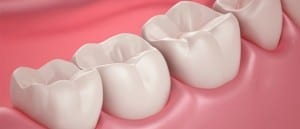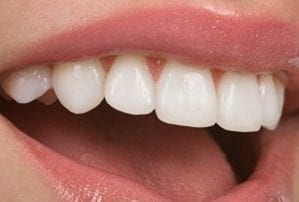Irrespective of age, tooth looseness is a common problem faced by many within this generation. If your tooth or teeth are loose due to trauma, bone loss, or gum disease (such as gum recession), it needs to be addressed post-haste in order to avoid the problem from becoming exacerbated. What’s more, loose teeth can affect other healthy teeth if not dealt with (since loose teeth could be an indicator or symptom of some underlying and worsening problem).
The symptom of having loose teeth or tooth includes teeth that move around its place when you touch it with your tongue or your finger. It could also involve pain if the tooth root is still alive or no pain if the tooth root is already dead. Having a loose tooth infection could also result in bone damage and deterioration of the tissues surrounding your teeth. Whatever is causing the looseness of your tooth or teeth should be treated immediately, especially if you’re under a lot of unbearable pain the whole while.
Gum Disease and Tooth Looseness

Gum inflammation is where gum disease usually starts. If you leave it to worsen without treatment, you can end up with something more severe, such as outright bone loss and the aforementioned problem regarding getting a loose tooth or two (or several). To wit, if you were to fix your gum disease, you could stave off outright tooth and jawbone degradation.
- Blunt-Force Trauma: Trauma to the teeth like from a punch, an accidental fall, or a car accident (whether you’re inside or outside the vehicle in question) can lead to you loosening your teeth or losing them altogether. You should consult your dentist on how to fix the teeth. You have options ranging from extraction to bone grafting as well as dental implantation treatments. It all depends on how loose the tooth is or has become exactly.
It’s important to note that if you can save the teeth, then do so because an empty tooth socket (or several) can only be fixed with removable dentures, permanent dentures, a dental bridge, or an outright dental implant. The implant option is probably the most expensive option available in light of it requiring surgery to remove the guns, drilling, putting the stud in, and then stitching the gums back prior to placing a new crown over what was once a tooth gap.
- Periodontitis and Periodontal Disease: One of the main causes of tooth looseness is periodontitis, which is severe gingivitis or gum disease. It involves a severe plaque buildup on the teeth to the point of advanced dental degradation. This happens because plaque has bacteria that can cause an infection in your gums. This makes your gums bleed, become swollen, and sensitive to damage. It gets worse, though.
As gingivitis worsens to periodontitis levels, expect the gums to separate from the teeth, thus exposing the tooth root and enabling the loosening of the teeth themselves. To keep your teeth from loosening this way, you should treat the gum disease at the earliest time possible or do some deep cleaning, take some reshaping antibiotics, or avail of bone grafting services.
Potential Solutions to Your Tooth Looseness Dilemma
With that in mind, here are the potential solutions you can use in order to deal with a loose tooth or two or more. It typically involves curing the root cause of the problem (usually periodontitis) or removal of the tooth if it’s beyond saving (extraction) then replacing the missing tooth with an implant and/or denture.
- Deep Cleaning: Once you’ve developed the late stages of periodontitis, pockets may form as bacteria spreads and infects your bones and gums. If the condition isn’t prevented or caught early on, your dentist will have to clean the bacteria out of the pockets with the assistance of the dental technique known as scaling or deep cleaning. Your dentist will actually scrape the tartar off the gum line to get rid of the bacteria, stave off gum recession, and let your teeth heal from the damaging disease. The dental professional is tasked to remove debris, plaque, and calculus (not the school subject, but the other name for tartar) from above the gum line.
If you don’t remove those troubling diseased pars of the teeth, they’ll only spread further and make your loose tooth or teeth issue become even worse. What’s more, dental deep cleaning is different from ordinary teeth cleaning or prophylaxis that only focuses on the teeth and what’s between them above the gum line (plus polishing the enamel or outer shell of the teeth). Deep cleaning deals with everything below the gum line, which is usually where periodontitis strikes. The calculus and plaque must go so that bacteria safe havens are eradicated altogether. Ordinary brushing can’t get rid of them.
- Root Planing: This procedure is usually utilized in the early stages of gum disease where your teeth are starting to loosen. It involves reshaping your teeth by getting rid of the rough spots right at the roots of your teeth. This will keep the germs from building up and making your loose teeth problem a lot more permanent and unfixable. Like with deep cleaning, root planing is required for the removal of collecting debris, calculus or tartar, and bacteria that have collected under your gum line. Typically, a pick-like device is used to do the scaling. Afterwards, even lasers can be utilized to take away all remaining tartar and plaque.

Because calculus or tartar below the gum line cannot be removed by normal flossing, brushing, or regular cleaning, special dentistry tools are called for to remove the bacteria that cause an immune response from your body (inflammation). When left untreated, the infection will continue to worsen and progress further along the gum line, which results in the loosening of teeth and severe bone loss. Your teeth might end up getting extracted altogether. When it comes to root planing, it involves smoothening out the root of the tooth for bacterial removal, use of a local anesthetic, and removal of rooted-in debris, bacteria, and tartar.
- Antimicrobial Therapy: This entry should be self-explanatory. Because bacteria are what makes your gums swell, your teeth deteriorate right from its roots, and for your bone to experience incremental damage as the infection worsens, you can treat your gum disease with antibiotics or antiseptics. When it comes to dealing with a loose tooth or teeth, you can help stave off total breakdown by getting to the root of the problem, which is the presence of the bacteria themselves. This is important because gingivitis and periodontal disease can lead to other complications or worsen them, such as premature births, full-body infections, stroke, and heart disease.
Antimicrobial therapy can reduce swelling and pain from gums infected with gum disease. It can even help deal with halitosis or bad breath since it targets the bacteria themselves. It’s a means of controlling the infection and it involves placing the antibiotics right under the gum topically or taking them as pills. The antibiotics kill or slow down bacterial growth that causes periodontal disease. It can also involve antiseptic mouth wash that prevents periodontitis in the first place while antibiotics are dependable when it comes to killing specific bacteria. Antibiotics are best used for short-term infections. Scaling and root planing is still the best for long-term periodontitis removal.
- Bone Grafts: Tooth pockets teeming with nasty bacteria might be found deep under the gum line, so simple scaling and root planing might not be enough to deal with them. You might have to undergo what’s known as a bone graft in order to stave off the loosening of teeth or deal with getting a loose tooth or several. This procedure involves pulling the gums away from the teeth for better and deeper cleaning out of the roots while at the same time every last pocket you can find that serves as a cesspool of bacterial growth can be filled.
The filling used to fill in the empty pockets consists of a bone graft manufactured using your own bone and tissues whenever possible or someone else’s bone and tissue (as well as artificial fillers). After a thorough cleaning has been done into the roots of your teeth that you couldn’t ordinarily do with deep cleaning and root planing (even when lasers are involved), then your gums can be stitched back together. After a few months of healing, new tissue and bone should form as well, so that your tooth looseness could finally be remedied. The tooth should now be reattached to the gums and bone.
- Splinting Teeth: Your dentist or periodontist (gum doctor) might also recommend splinting your teeth. It’s usually suggested after a detailed assessment has been done on what’s causing your teeth to come loose. This procedure involves fixing teeth wherein bone that normally supports it (along with periodontal ligaments that attach the bone to the teeth) is progressively lost. Teeth splinting is the act of putting a metal bar splint onto the back tooth or teeth (the molars) for the sake of stabilizing them. The bar is needed in order to take the greater biting forces of the back teeth better.
Teeth looseness is typically caused by bite injury or occlusal trauma. This damages the remaining periodontal structures of your teeth, resulting in movement from an otherwise stationary molar. This trauma comes in two varieties, which are primary and secondary occlusal trauma. The primary version is when excessive force is applied to normal periodontal structures such as teeth grinding or clenching. Secondary occlusal trauma is when normal biting forces ruins a loose tooth suffering from the looseness and periodontal detachment due to periodontitis. The splint modifies the forces applied to the teeth and stabilizes it for good measure until it can heal from periodontal issues.
- Tooth Extraction, Dentures, Bridges, and Dental Implants: When all else fails and you can’t save a tooth that’s loosened any longer, you usually have no choice but to extract it altogether. You still need to address the underlying reason behind the looseness of the tooth. If it’s blunt-force trauma, you can leave things be, but if it’s periodontitis, you still have to save money for that deep cleaning and root planing operation to save the rest of your teeth. In regards to dealing with your missing tooth dilemma, there are several options available to you. You can get a dental bridge, for example.
This involves using the two nearby teeth as anchors for a fake crown that replaces your extracted teeth, but this involves destroying those two other teeth to fit in the new anchors. You can also wear temporary or removable dentures, but if it’s just a few teeth or one tooth they’re notorious for easily getting lost. If you want a more permanent denture placed where your missing tooth used to be, you need to put in a metal stud or dental implant into that empty tooth socket, then plug in the new crown over it, with the stud serving as an anchor to your teeth.
Conclusion

Adults should worry about getting loose teeth because when you’re all grown up, you don’t have any milk teeth left that could be replaced with another new set of teeth. What you have now is the teeth you’ll be using for the rest of your life, so you should be more careful about tooth extractions and having a loose tooth as you reach adulthood. To alleviate your sense of panic, you should see your dentist right now and consult with him on how to best approach your loose teeth problem. In regards to which approach you should take in dealing with loosened teeth, it depends on you.
If it’s a tooth placed at the back of your mouth, then you won’t mind extracting it compared to dealing with loose front teeth. If you want to save that tooth or those teeth, you can instead treat the gum disease that’s probably causing the looseness with deep cleaning, root planing, bone grafting, antimicrobial therapy, and/or teeth splinting. Otherwise, if it’s a tooth loosened from blunt-force trauma (like a punch or a car accident), then maybe you should look into removing the tooth and getting dentures or a dental implant to fix your missing tooth problem. Tooth replacement treatments are available.
Thantakit International Dental Center is Thailand’s longest established dental center. Situated in Bangkok, our clinic is renowned across the world as a destination for world-class dentistry, with most of our patients flying to us from Australia.
Please contact us today and get a FREE dental consultation.













